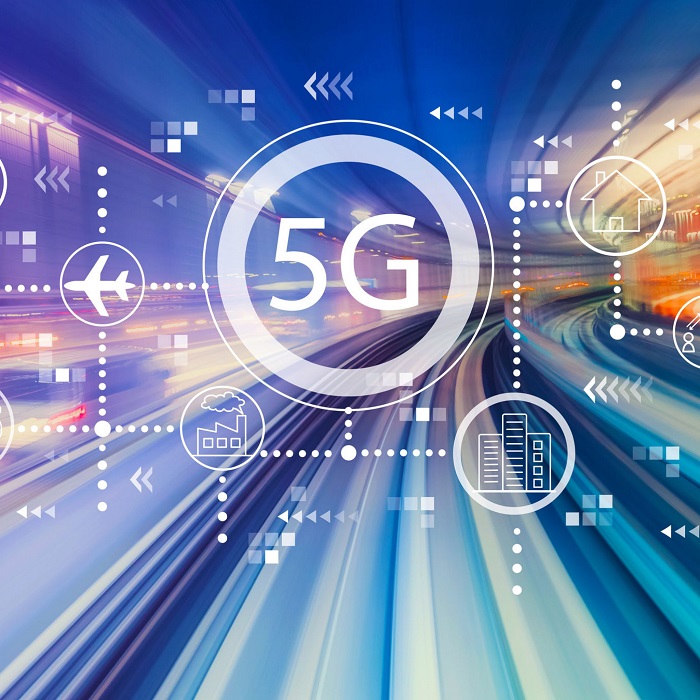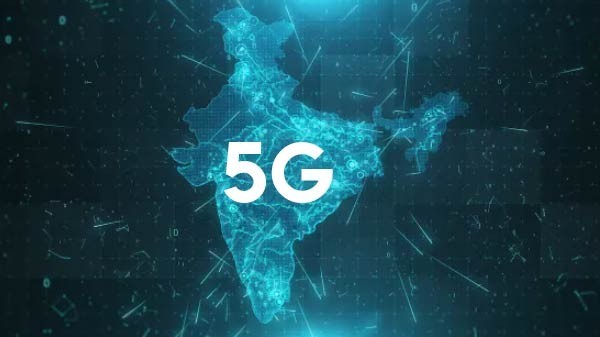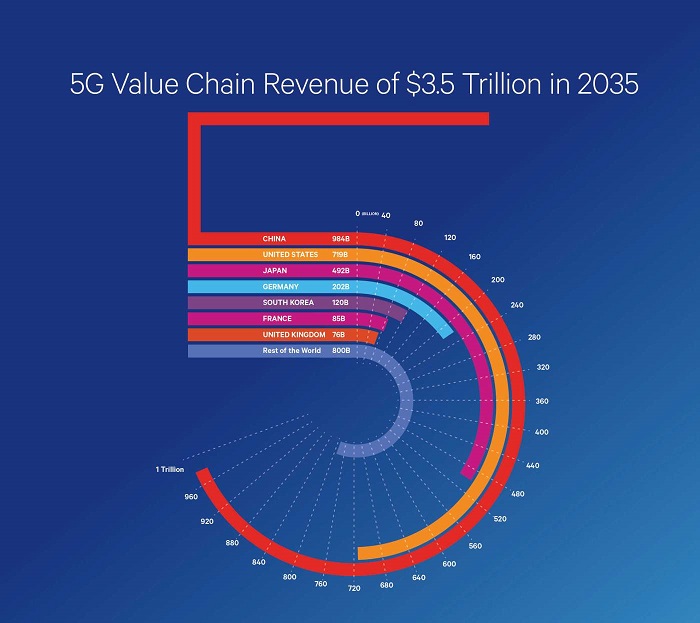We have been using different wavelengths of electromagnetic radiation to transmit information for hundreds of years. Fibre optic cables are the bedrock of that internet as they manage to transmit electromagnetic radiations containing insane amounts of information. But we cannot connect all devices to it, because many devices are wireless. To make wireless data transmission possible, cellular networks needed to be developed and it all started in Japan, with the first generation cellular network known as 1G. The first generation mobile network (1G) was all about voice. 2G was about voice and texting; 3G was about voice, texting, and data; 4G was everything in 3G but faster, and 5G will be its successor; it will be fast enough to download a full-length HD movie in seconds.
But high speed downloading isn’t the end of its perks; its unique combination of high-speed connectivity, very low latency, and ubiquitous coverage will support smart vehicles and transport infrastructures such as connected cars, trucks, and buses, where a split second delay could mean the difference between a smooth flow of traffic and a 4-way crash at an intersection.
Imagine billions of connected devices exchanging data and information in real-time to reduce road accidents; or life-saving applications that can take flight thanks to lag-free guaranteed connections; or production lines so predictive they can prevent interruptions well before they occur.
Yet, the 5G promises are much more than the current state of a “faster 4G”, 5G introduces a whole new realm of dynamic capabilities that can be used to introduce new applications, new services and completely new business models. It will bring huge opportunities for CSPs to shift from an “infrastructure” to a platform mindset and become unique enablers of network embedded services.
Why is there so much hype about this technology after all?
The world is at the cusp of a technological metamorphosis. With the aim of rambling around in self-driving cars and having smarter autonomous solutions in everyone’s vicinity, 5G is going to be the foundational building block.
5G wireless technology is meant to deliver higher multi-Gbps peak data speeds, ultra-low latency, more reliability, massive network capacity, increased availability, and a more uniform user experience to more users. Higher performance and improved efficiency empower new user experiences and connect new industries.
5G has been deployed in 35+ countries and counting. It is a much faster rollout and adoption compared with 4G. Consumers are very excited about the high speeds and low latencies. But 5G goes beyond these benefits by also providing the capability for mission-critical services, enhanced mobile broadband and massive IoT. While it is hard to predict when everyone will have access to 5G.
Advancing societies
5G is going to open groundbreaking ways of improving safety and sustainability. From smarter electricity grids for greatly reduced carbon emissions to more connected vehicles sharing data to avoid road collisions and sensors detecting natural disasters ahead of their time are just the tip of the iceberg for the possibilities that 5G enables.
Transforming industries
5G is the foundation for flexible, efficient and responsible business. Production lines autonomously reacting to supply and demand, Digital replicas that can warn about real machinery faults ahead of time, Logistic networks autonomously routing goods based on real-world conditions, 5G sets the stage for extensive and advanced industrial cultures.
Will China Dominate the race of 5G?
China’s 5G networks are among the most advanced in the world unless India is enabled to challenge them like the US did that to China, post-1980. According to CCS Insights, China will account for more than half of all 5G users by 2022. China is also expected to dominate through 2025, at which time it might represent 40 per cent of global 5G connections, according to the GSMA. Mainland China is already the world’s largest smartphone market, and it also boasts the largest 4G market, with 843.7 million 4G subscribers. Based on a 5G study published by the China Academy of Information and Communications Technology, China’s aggressive investments in 5G infrastructures will be key to the country’s status as the world’s largest 5G market soon, unless India challenges as it did for 2G and 4G.
The US and other liberal democracies are falling behind China in the global 5G race.
The Indian Roadmap to 5G
5G networks were once expected to be launched in India by late 2020 or early 2021, but it’s now highly unlikely that this could happen. According to recent reports, there have been two significant developments relating to 5G in India. The first is that the 5G spectrum auction is likely to be postponed from this year to early 2022, as per recent media reports and even if a date is soon set to auction the spectrum and the telcos quickly find the money to buy it, they still need to perform a lot of tests before launching commercial service. This will further push the launch of 5G services to at least the second half of 2022 or early 2023. The second is that after the clearance of 5G trials, the industry has finally acquired spectrum to conduct 5G trials, albeit with several riders and conditions.
Being the second-largest telecom market in the world, Indian was anticipating with high spirits to adopt the latest cellular network standards and was hoping to lead the race of launching 5G.
Globally 118 operators in 59 countries have deployed 5G network, though only China and S. Korea has progressed to significant commercial operation. China has already developed more than 5 lakh 5G base stations covering around 7-8 per cent of their population.
Regarding India, the telcos are struggling to charge a premium for 5G services even in mature and developed telecoms markets. For instance, in South Korea, more than 500,000 5G users decided to switch back to 4G earlier this year because of poor 5G network experience.
We have four times more people and four times less spectrum which means that the spectrum available to one person is 1/16th of the global average. Availability of 175 MHz only in 3300 MHz to 3600 MHz bands will mean that approximately 50 MHz or so spectrum per operator could be allocated, which is far below the global average.
The delay offers an opportunity to the Indian telcos to straightway move to 5G NSA and skip the 5G Stand Alone (SA) step. The initial rollouts of 5G networks are based on NSA focused on enhanced mobile broadband (eMBB). Essentially, 5G NSA uses the existing 4G network infrastructure. Typically, the telcos start with NSA and then move on to 5G SA deployments. Most of the use cases associated with 5G, like remote surgery and autonomous vehicles, are possible with SA.
“5G has already been adopted and deployed in 57 countries with 228.7 million subscribers, commercially launched by more than 150 operators (as per GSA), and various use cases have been established, there is surely no longer need for trials in India. We can learn and benefit hugely from the experience of the others into building more robust networks and improved customer experience, and directly go into commercial launch of 5G,” says TV Ramachandran, President, Broadband India Forum (BIF).
Effect on the economy
Through a landmark 5G Economy study, it is found that 5G’s full economic effect will likely be realized across the globe by 2035, supporting a wide range of industries and potentially enabling more than $13.2 trillion worth of goods and services. This impact is much greater than previous network generations. The development requirements of the new 5G network are also expanding beyond the traditional mobile networking players to industries such as the automotive industry.
5G value chain could alone support up to 22.3 million jobs, or more than one job for every person if implemented. And there are many emerging and new applications that will still be defined in the future. Only time will tell what the full “5G effect” on the economy is going to be. 5G is already here today, and global operators started launching new 5G networks. In the coming years, many countries expect nationwide 5G mobile networks.
Mayank Vashisht | Technology Journalist | ELE Times












